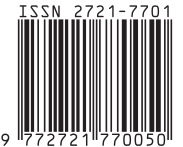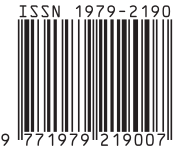Aplikasi Herbisida Berbahan Aktif Campuran Atrazin-Mesotrion dan Paraquat dalam Pengendalian Gulma pada Pertanaman Jagung (Zea mays L.)
Abstract
Corn in cultivation is inseparable from several other organism disorder s that can inhibit or reduce that productivity. One of the disorders is caused by weeds. Application of herbicides with active ingredients on the mixture of atrazine-mesotrion, and paraquat which is applied to corn plants has its own effect on corn plants if it is applied not according to the time or recommended dosage. The experimental design used, namely Randomized Completely Block Design (RCBD) with 6 treatments and 4 replications, namely P0 (control or uncontrolled), P1 (manual weeding 21 hst and 42 hst), P2 (Application of atrazine a nd mesotrione dose of 1.5 l / ha 21 hst), P3 (Application of paraquat dose 1 l / ha 21 hst), P4 (Application of atrazine and mesotrione dosage 1.5 l / ha 21 hst and 42 hst), P5 (Application of paraquat dose 1 l / ha 21 hst and 42 hst). The results showed that the use of herbicides with active ingredients atrazine, mesotrione, and paraquat had been able to effectively reduce the biomass of broad-leaf weeds and grasses. The use of the paraquat active ingredient applied at 21 hst showed the highest phytotoxicity symptoms in weeds and in maize plants. The use of two active ingredients of herbicide, manual weeding and control had no effect on plant height, growth rate, cob length, ear circumference, and had effect on shell weight.
- Authors retain copyright and grant the journal right of first publication with the work simultaneously licensed under a Creative Commons Attribution License that allows others to share the work with an acknowledgement of the work's authorship and initial publication in this journal.
- Authors are able to enter into separate, additional contractual arrangements for the non-exclusive distribution of the journal's published version of the work (e.g., post it to an institutional repository or publish it in a book), with an acknowledgement of its initial publication in this journal.
- Authors are permitted and encouraged to post their work online (e.g., in institutional repositories or on their website) prior to and during the submission process, as it can lead to productive exchanges, as well as earlier and greater citation of published work.







